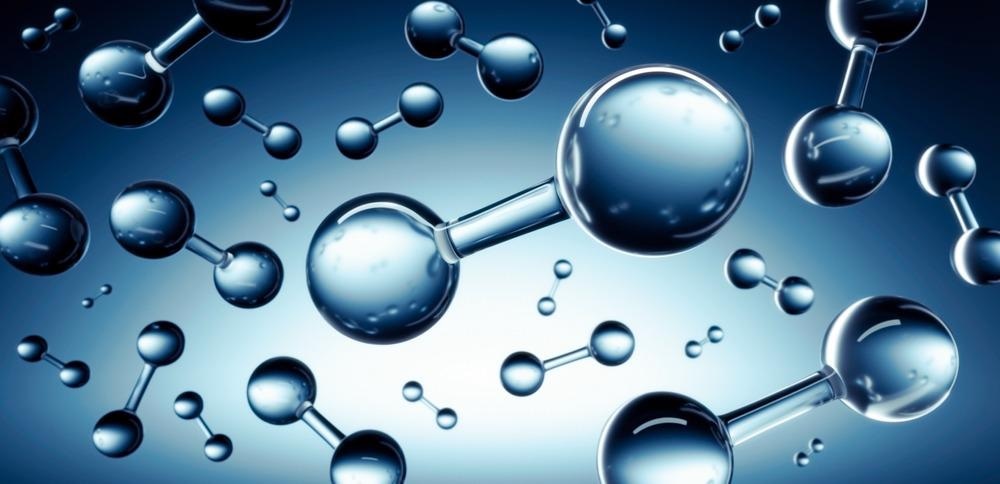The use of photocatalytic (PC) semiconducting monolayer nanofilms to split hydrogen from water was presented in the study published recently in the journal ACS Applied Nano Materials.

Study: First-Principles Calculations on Semiconducting ε-GeS and ε-SnS Monolayer Nanosheets with Photocatalytic Activity for Sunlight-Driven Water Splitting. Image Credit: peterschreiber.media/Shutterstock.com
Single Layer Nanofilms – A Step Forward in Hydrogen Extraction
Energy use will never cease to be an essential portion of global economic growth. However, it comes at a cost of being accompanied by problems such as climate change, environmental damage and energy scarcity as a result of excessive consumption of conventional fossil fuels.
These obstinate issues have fueled the pursuit of ecologically viable forms of energy. Due to its improved combustion enthalpy, ease of recycling, and generation of water at its combustion end, hydrogen is an excellent green energy resource for the suitable alternative of storage-limited fossil fuels.
Using semiconductor solar cells as hosts driven by the light from the solar PC water division has been extensively regarded as an effective and appealing approach to overcome the existing energy issues. However, numerous challenges must be addressed before the globalization of inexpensive and extensive hydrogen generation via sunlight-driven water splitting.
Building from Previous Research
Countless 2D photocatalytic water dividing nanofilms, such as black-phosphorene (α-P), g-C3N4, and FePS3, have been shown to be highly efficient catalysts for hydrogen generation in water division.
Beneath visible-light irradiation, the PC spontaneous hydrogen evolution reaction (HER) rate of single element α-P slender-nanofilms is 18 times that of its bulk equivalent and even greater than that of g-C3N4.
Despite its comparatively high PC H2 generation efficiency, both g-C3N4 and FePS3 monolayers exhibit an enormous electrode potential analogous to water oxidation half-reaction (OER). As a result, there is much potential for theoretical research into PC water splitting in two-dimensional systems.
Single-layer group-IV monochalcogenides have recently appeared to be a unique 2D phosphorene-like family, attracting significant interest due to benefits such as being eco-friendly, brilliant stability, minimal toxicity, abundant, and chemically stable. Furthermore, when γ-SnS (blue-phosphorene-like SnS) is piled on top of γ-GeSe (blue-phosphorene-like GeSe), the new layered structure creates a field comprising of electrical charge, allowing PC HER and OER to occur suddenly in the presence of sunlight.
In a previous study, it was indicated that the ε-SnS monolayer with α-phosphorene structure (ε-SnS) is considered to be a viable catalyst for water division because of its aligned band-edge, substantial absorption of light, and minimal PC HER and OER over-potentials.
These findings thoroughly established that the structure of these group IV-VI monochalcogenides, which resemble the structure of phosphorene, may make them innovative platforms for catalysis. Following from the success of the ε-GeS and ε-SnS allotropes involved in PC water division, the team wondered if the Ge/Sn and S features could establish other slender nanofilms which resemble phosphorene with elevated PC efficiency driven by the light from the sun. Estimations demonstrated the capability of ε-GeS and ε-SnS monolayers to accomplish this.
The team used a density functional theory to investigate the structural, electrical, and optical properties as well as mechanical properties of ε-GeS and ε-SnS monolayers, while keeping tabs on the redox capacities during HER and OER.
Predicting Water Splitting Capacities
The team concluded that based on computations, it was predicted that two 2D post-phosphorene materials with anisotropic behavior, ε-GeS and ε-SnS monolayers, are stable when it comes to their thermal, dynamical and mechanical properties.
Both monolayers exhibit direct-band gap semiconducting characteristics, with acceptable band gaps resulting in significant visible-light absorbance. The team also noted that the monolayers display anisotropic carrying behavior for both electrons and holes, whereas the mobilities of electron are fairly low.
Surprisingly, the band-edge positions of strain-less ε-GeS and ε-SnS monolayers can bestride water potentials, indicating their strong PC water splitting capacity.
More intriguingly, these monolayers, following TM-atom decorating (from Sc to Zn), exhibit the peak HER activity with low over-potentials, which are equal to or in some cases better than Pt. Furthermore, the team discovered that for OER, Ni/ε-SnS is an optimum catalyst, with a favorable OER over-potential, which is lower as compared to the common IrO2 catalyst.
Reference
Fang, C., Wang, X., Zhang, Q., and Zhou, J. (2022). First-Principles Calculations on Semiconducting ε‑GeS and ε‑SnS Monolayer Nanosheets with Photocatalytic Activity for Sunlight- Driven Water Splitting. ACS Applied Nano Materials. Available at: https://pubs.acs.org/doi/full/10.1021/acsanm.1c04495.
Disclaimer: The views expressed here are those of the author expressed in their private capacity and do not necessarily represent the views of AZoM.com Limited T/A AZoNetwork the owner and operator of this website. This disclaimer forms part of the Terms and conditions of use of this website.